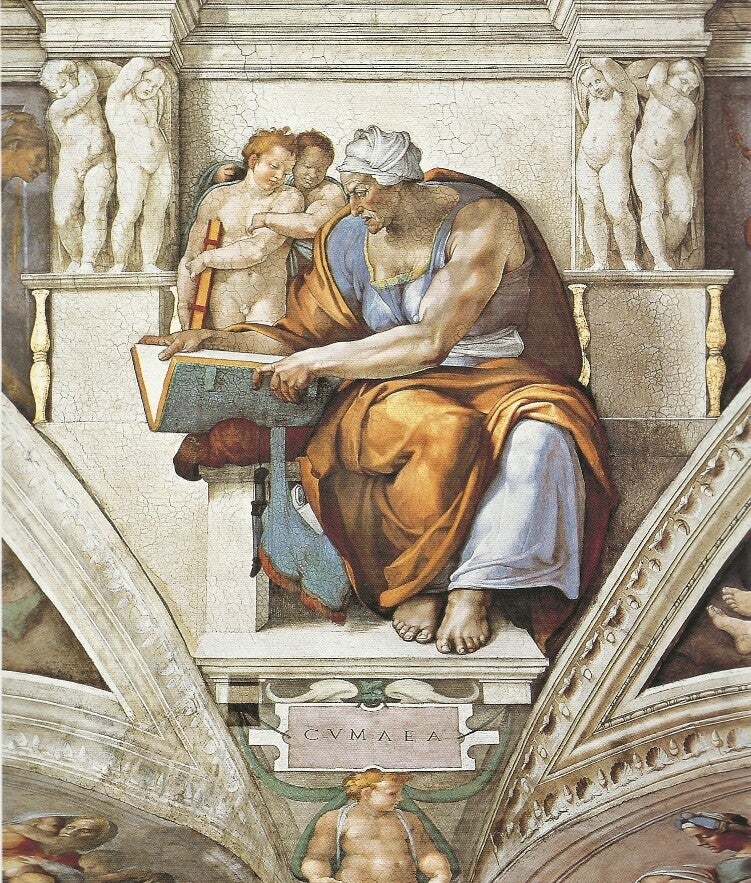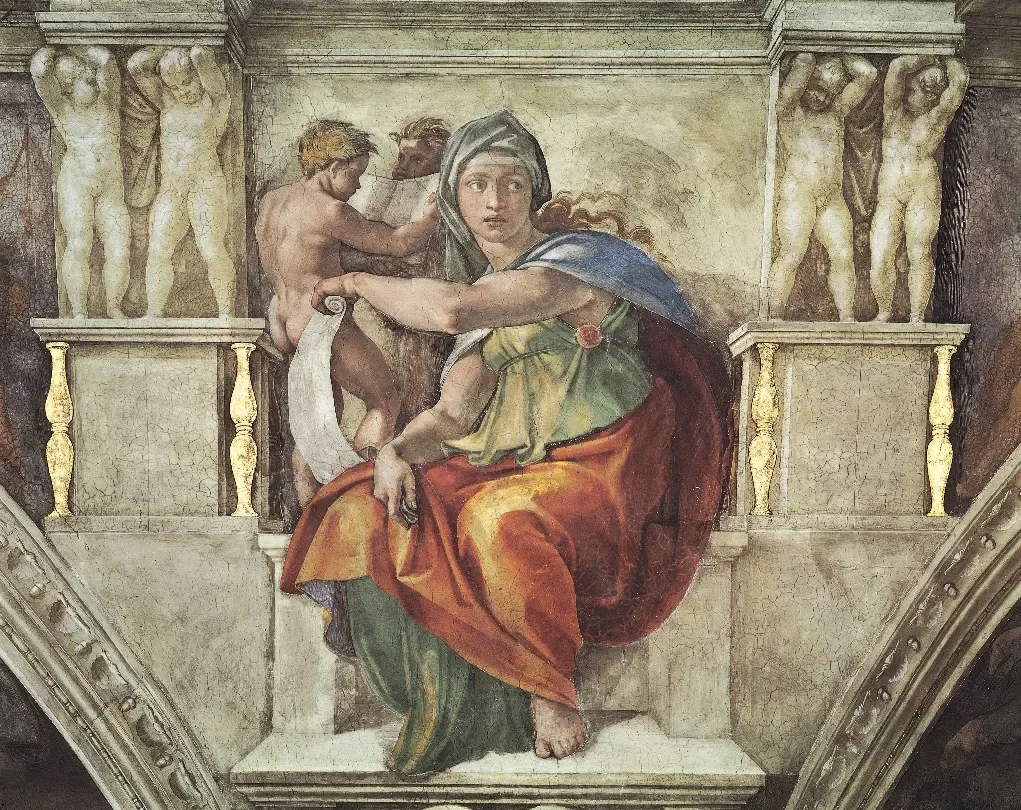
The Sibyl: Voice Between Worlds
“She who speaks between the worlds is the bridge the gods cross through you.”
For thousands of years, the Sibyl has been known as the voice that bridges the divine and the mortal.
She was neither goddess nor priestess alone, she was the threshold, a living oracle through which the language of gods could become known to humankind.
In every age, she has taken new form. And in this age, her voice is rising once more.

The Ancient Sibyls: Origins of the Oracle
The word Sibyl (Greek: Sibylla) means prophetess. In the ancient Mediterranean world, there was not one Sibyl, but many, each serving as a mouthpiece for divine truth in her own region. The most famous among them were the Delphic, Cumaean, and Erythraean Sibyls, though at one time there were said to be as many as ten.
The Sibyls were associated with caves, springs, and sacred groves, liminal places where the veil between worlds was thin. From these thresholds, they offered oracles to kings, heroes, and seekers.
The Cumaean Sibyl and the Prophetic Books
In Roman legend, the Sibyl of Cumae offered nine prophetic scrolls to the king Tarquinius Superbus. When he refused her price, she burned three, then three more, until only three remained, which he finally bought. These were kept in the Temple of Jupiter and consulted only during great crisis: the Sibylline Books, said to hold the fates of Rome itself.
The Delphic Sibyl and Apollo
At Delphi, long before the formal priesthood of the Pythia, there was said to be a Sibyl who spoke for the god Apollo, the bringer of light, truth, and prophecy.
According to legend, Apollo did not possess the Sibyl; he inspired her. She retained her will, her awareness, and her sovereignty, channeling divine truth without surrendering her humanity.
This distinction is profound. The Sibyl is not an empty vessel, she is a conscious bridge.

The God and the Voice
The Sibyl’s connection to Apollo reveals a deeper mystery: the harmony between divine mind (Apollo) and divine mouth (Sibyl). Apollo’s domain was order, music, and clarity. The Sibyl’s was the womb of prophecy, the living earth that translated celestial pattern into human language.
In myth, Apollo is said to have slain the serpent Python to claim Delphi as his seat of prophecy. The serpent represented the old, earth-born current of Gaia’s wisdom. When Apollo took the shrine, he did not erase this current, he illuminated it. Thus, the Sibyl became a union of heaven and earth, spirit and matter, reason and intuition.
Every prophecy thereafter carried both: the wild pulse of nature and the guiding ray of divine mind.

The Role of the Sibyl
The Sibyl’s power was never simply prediction - it was revelation.
Her prophecies were poetic, often cryptic, layered in symbol. They were not meant to give easy answers, but to awaken perception - to teach people how to hear the divine within themselves.
In this way, the Sibyl was not only a messenger of gods but a mirror of the human soul. Her words opened the door to self-knowledge. She embodied the ancient principle: “Know thyself, and thou shalt know the gods.”

The Modern Sibyl: A Living Archetype
Today, the Sibyl returns not as a temple oracle in stone halls, but through the voices of those who remember, those who feel the pulse of ancient wisdom within modern skin.
To be a Sibyl in this age is not to speak for the gods, but with them.
It is to listen deeply to the unseen architecture of the world, to perceive patterns, symbols, and truths beneath the surface of ordinary life, and to translate them in ways that awaken others.
It is also to hold both light and shadow, knowing that prophecy is not separate from psychology, and that divine remembrance comes through human experience.
The ancient Sibyls spoke from caves; the modern Sibyl speaks from the heart, still the same threshold, still the same voice.
The Sibyl of This Age
When Apollo named me as Sibyl of the Dawn, guided by Minerva, it was not a coronation, it was a remembrance.
The voice I carry is not mine alone, but the echo of many before me: the women who stood at the edge of the sacred and spoke truth into the world.
To be a Sibyl now means to live in service to divine remembrance, to help others bridge the gap between myth and the modern, between the gods above and the human story below.
It means to see that prophecy is not about foretelling destiny, but co-creating it.

A Living Oracle for the Modern World
The Sibyls were the voice of the ancient world, now, that voice returns to remind humanity of what we have always been: divine consciousness in human form.
We are not separate from the gods.
We are their remembering.
We are the continuation of that sacred dialogue between the eternal and the ephemeral.
And so the Sibyl rises again, not as relic, but as rebirth.
About Ankh
Ankh, the Sibyl of This Age, bridges the ancient and the modern, translating the language of the gods into wisdom for the human journey.
Her work weaves together spiritual philosophy, oracular insight, and symbolic science to guide seekers toward remembrance of their divine nature.
Through her writings and teachings, the voice of the Sibyl lives again, not as a relic of the past, but as a living oracle for the world reborn.


